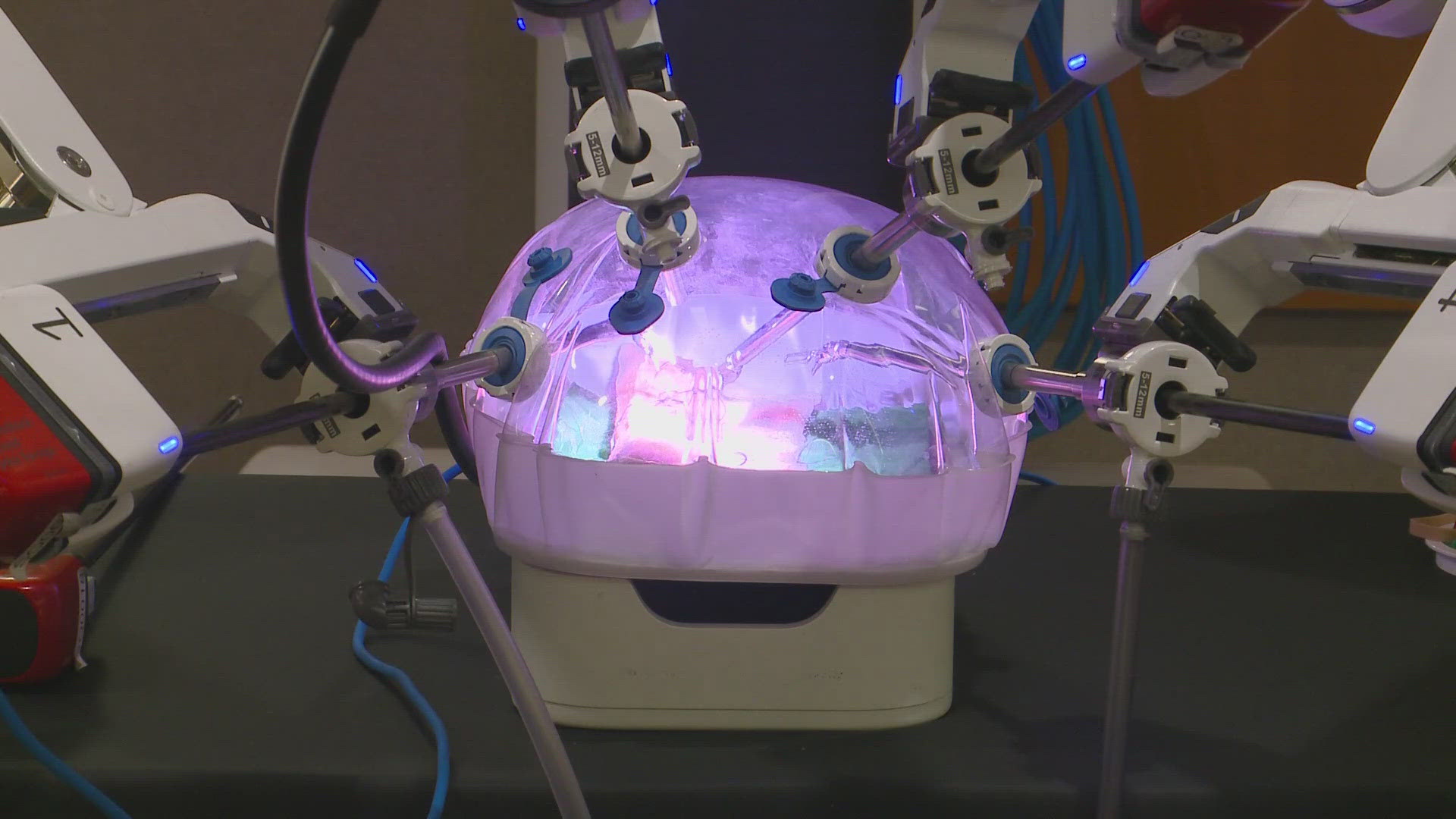SPOKANE VALLEY, Wash. — It looks like something out of a sci-fi movie.
But with its multiple arms and powerful camera, the robot sitting inside Valley Hospital isn't futuristic fiction. It's the reality of surgery at MultiCare’s Valley and Deaconess hospitals.
"It allows us to understand whether or not we're grasping something too harshly or are we feeling something. The new generation has what we call haptic feedback, so being able to feel the tissue with the robotic arm,” General Surgeon Dr. Stephen Reese said.
If you've recently had surgery at MultiCare, you may have gone under the knife wielded by a robot like the Da Vinci system now being used by surgeons like Reese. Robotic-assisted surgery keeps the surgeon in the operating room. It's still hands-on for the doctor but uses robotic arms for a less invasive procedure.
“True of minimally invasive surgery, [it] gives us less wound problems, less blood loss and less post-operative pain so the use of fewer narcotics in our patients post-operatively,” Reese said.
The Da Vinci system allows surgeons to work inside a body on soft tissue without making large incisions for access.
Monday’s public demonstration involved a silicone model of a colon instead of real flesh, giving the public and aspiring doctors like Tommy Elliott a first-hand look at the cutting-edge technology he may soon use.
“Kind of developing into what I’ll be doing mostly, maybe. Potentially in nine, ten years from now,” Elliott said.
A recent high school grad, Elliott is spending his summer before heading to the University of Chicago learning on the job at Deaconess. The hospital system has been using machines like this for years, but is keeping up to date on new versions and emerging uses.
Doctors will soon train on a new Velys machine, says clinical specialist Courtney Gigliotti, who will train the doctors on how it can map out and assist in total knee replacements.
“Once I’m happy with the plan I’m going to move on to my next step and it's going to move into its cut plane. And with this robot in particular, the surgeon is still actually making the cut,” Gigliotti said.
It does away with the old method of using cutting blocks, shortening surgery and recovery times, according to Gigliotti.
Using a real-time mapping of the bones taken in the operating room, a surgeon can be more accurate and precise in repairing and replacing bone, soft tissue, and ligaments.
"It's going to get you within half a millimeter of your cut plan,” Gigliotti says while demonstrating with a whirring saw blade.
It’s exactly what Elliott will bank on as an orthopedic surgeon.
“Comforting knowing there's more aid in the future, especially with something so precise,” Elliott said.
Good news for the future of medicine and future patients.
"This is, in my opinion, a natural progression for Valley to take,” Reese said.
DOWNLOAD THE KREM SMARTPHONE APP
DOWNLOAD FOR IPHONE HERE | DOWNLOAD FOR ANDROID HERE
HOW TO ADD THE KREM+ APP TO YOUR STREAMING DEVICE
ROKU: add the channel from the ROKU store or search for KREM in the Channel Store.
Fire TV: search for "KREM" to find the free app to add to your account. Another option for Fire TV is to have the app delivered directly to your Fire TV through Amazon.
To report a typo or grammatical error, please email webspokane@krem.com.

